When She Says She Doesn’t Send Nudes
when she says she doesn’t send nudes

More Posts from Delightfulskywalker and Others

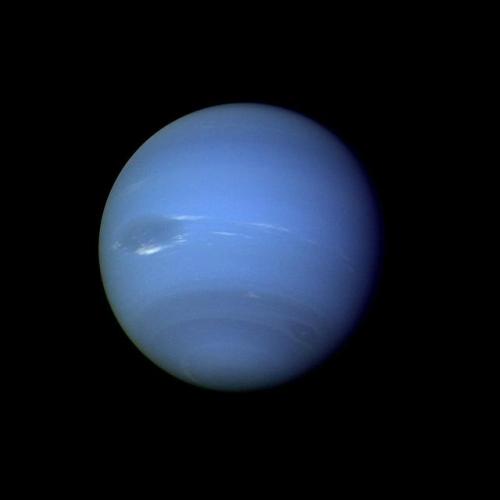
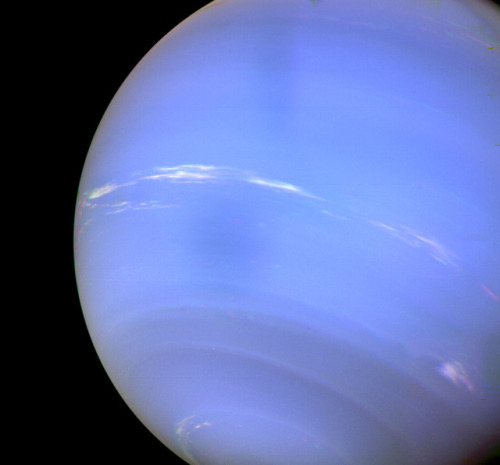
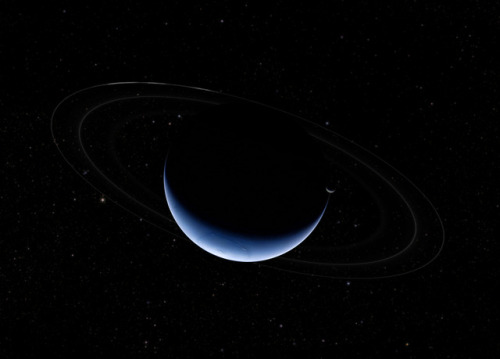
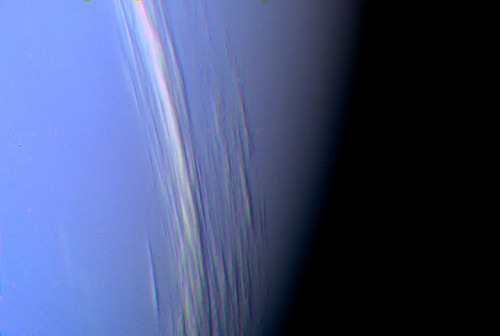
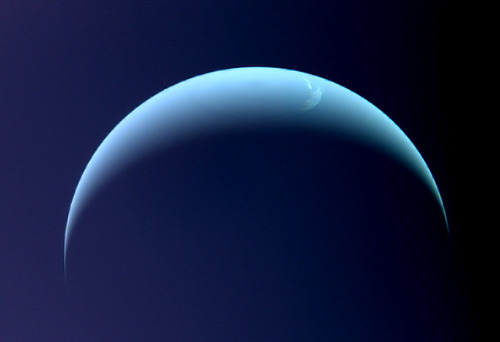
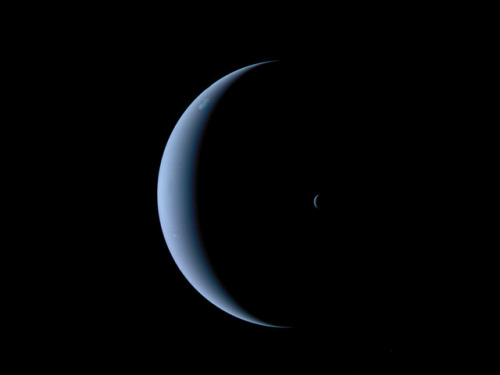
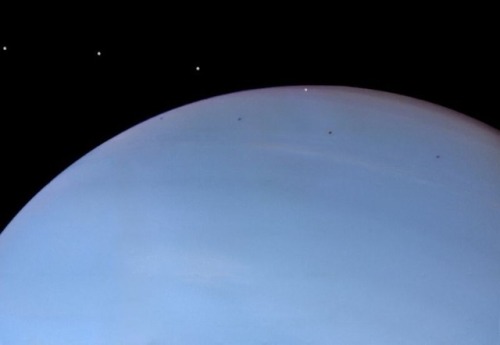
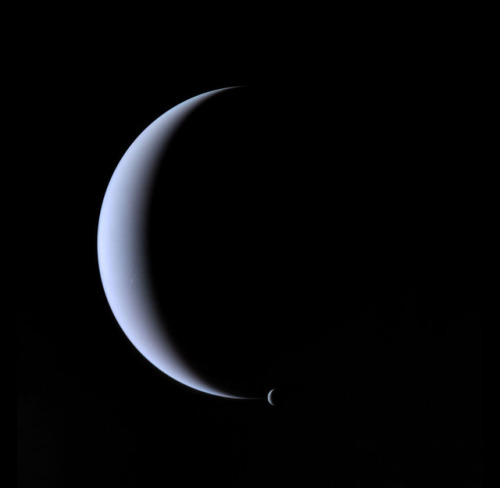
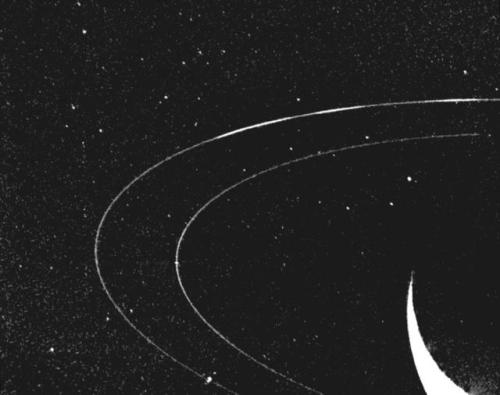
Neptune ♆
On this day in 1846 was discovered the planet Neptune.
The ice giant Neptune was the first planet located through mathematical predictions rather than through regular observations of the sky. (Galileo had recorded it as a fixed star during observations with his small telescope in 1612 and 1613.) When Uranus didn’t travel exactly as astronomers expected it to, a French mathematician, Urbain Joseph Le Verrier, proposed the position and mass of another as yet unknown planet that could cause the observed changes to Uranus’ orbit. After being ignored by French astronomers, Le Verrier sent his predictions to Johann Gottfried Galle at the Berlin Observatory, who found Neptune on his first night of searching in 1846. Seventeen days later, its largest moon, Triton, was also discovered.
Neptune is invisible to the naked eye because of its extreme distance from Earth. Interestingly, the highly eccentric orbit of the dwarf planet Pluto brings Pluto inside Neptune’s orbit for a 20-year period out of every 248 Earth years. Pluto can never crash into Neptune, though, because for every three laps Neptune takes around the Sun, Pluto makes two. This repeating pattern prevents close approaches of the two bodies.
Nearly 4.5 billion kilometers (2.8 billion miles) from the Sun, Neptune orbits the Sun once every 165 years.
Uranus’ blue-green color is also the result of atmospheric methane, but Neptune is a more vivid, brighter blue, so there must be an unknown component that causes the more intense color.
Despite its great distance and low energy input from the Sun, Neptune’s winds can be three times stronger than Jupiter’s and nine times stronger than Earth’s.
Winds on Neptune travel faster than the speed of sound.
In 1989, Voyager 2 tracked a large, oval-shaped, dark storm in Neptune’s southern hemisphere. This “Great Dark Spot” was large enough to contain the entire Earth.
Neptune has five known rings. Voyager 2’s observations confirmed that these unusual rings are not uniform but have four thick regions (clumps of dust) called arcs. The rings are thought to be relatively young and short-lived.
Neptune has 14 known moons, six of which were discovered by Voyager 2.
Triton, Neptune’s largest moon, orbits the planet in the opposite direction compared with the rest of the moons, suggesting that it may have been captured by Neptune in the distant past.
To know more about the planet Neptune click here and here.
Images credit: NASA/JPL- Caltech (some images processed by Kevin M. Gill)
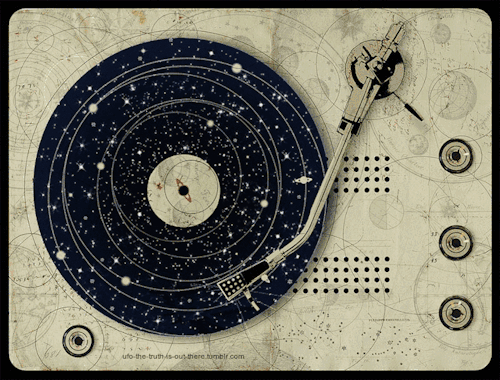
My little monbebe heart :(( this is the best thing that has ever happened







The Most Influential Popular Science Books
Here is a list of legendary books on scientific discoveries and ideas that changed the world: true classics that are recommended for everyone.
Dialogue Concerning the Two Chief World Systems by Galileo Galilei (1632): “The most proximate cause of Galilei being brought to trial before the Inquisition. Using the dialogue form, a genre common in classical philosophical works, Galileo masterfully demonstrates the truth of the Copernican system over the Ptolemaic one, proving, for the first time, that the earth revolves around the sun. Its influence is incalculable. The Dialogue is not only one of the most important scientific treatises ever written, but a work of supreme clarity, remaining as readable now as when it was first published.”
The Origin of Species by Charles Darwin: ”The publication of this book in 1859 marked a dramatic turning point in scientific thought. Selling out its first edition on its first day, The Origin of Species revolutionized science, philosophy, and theology. Darwin’s reasoned, documented arguments advance his theory of natural selection and his assertion that species started with a few simple forms that mutated and adapted over time.“
A Brief History of Time by Stephen Hawking (1988): “How did the universe begin—and what made its start possible? Does time always flow forward? Is the universe unending? What will happen when it all ends? Told in language we all can understand, A Brief History of Time plunges into the realms of black holes, quarks, antimatter, the big bang and a bigger God. Stephen Hawking brings us closer to the ultimate secrets at the very heart of creation.”
Cosmos by Carl Sagan (1980): “Cosmos is one of the bestselling science books of all time. Cosmos retraces the fourteen billion years of cosmic evolution that have transformed matter into consciousness, exploring such topics as the origin of life, the human brain, Egyptian hieroglyphics, spacecraft missions, the death of the Sun, and the list goes on.”
Silent Spring by Rachel Carson (1962): “The marine biologist’s documented indictment of DDT led both to a U.S. ban on the insecticide and to the birth of the modern environmental movement. Carson argues that DDT not only indiscriminately kills insects, but also accumulates in the fat of birds and mammals high on the food chain, thinning eggshells and causing reproductive problems.”
Relativity: The Special and General Theory by Albert Einstein (1916): “In the early 20th century, scientists began to interrogate the Newtonian model of Physics that posits absolute time, intrigued by the possibility of a dimension in which space and time overlap. This text is Einstein’s philosophical explanation of the idea that changed the way we understand the physics of space and time.“
PS find me on Instagram, Facebook & Tumblr
-
 thyrandomed1tor liked this · 1 week ago
thyrandomed1tor liked this · 1 week ago -
 birdwish2 liked this · 1 week ago
birdwish2 liked this · 1 week ago -
 whatdoiputhereuhh liked this · 1 week ago
whatdoiputhereuhh liked this · 1 week ago -
 cheezwhizzers liked this · 1 week ago
cheezwhizzers liked this · 1 week ago -
 nightshadezombie reblogged this · 1 week ago
nightshadezombie reblogged this · 1 week ago -
 ithasabluecover reblogged this · 1 week ago
ithasabluecover reblogged this · 1 week ago -
 thatwolfboy reblogged this · 1 week ago
thatwolfboy reblogged this · 1 week ago -
 anon3255 liked this · 1 week ago
anon3255 liked this · 1 week ago -
 somekindofwren liked this · 1 week ago
somekindofwren liked this · 1 week ago -
 insanesnail liked this · 1 week ago
insanesnail liked this · 1 week ago -
 cowhidepillowcase liked this · 1 week ago
cowhidepillowcase liked this · 1 week ago -
 redraspberryleaf liked this · 1 week ago
redraspberryleaf liked this · 1 week ago -
 kaiyonohime reblogged this · 1 week ago
kaiyonohime reblogged this · 1 week ago -
 harshethic reblogged this · 1 week ago
harshethic reblogged this · 1 week ago -
 justanotherdharmabum reblogged this · 1 week ago
justanotherdharmabum reblogged this · 1 week ago -
 dorkofyork reblogged this · 1 week ago
dorkofyork reblogged this · 1 week ago -
 weeberc3 reblogged this · 1 week ago
weeberc3 reblogged this · 1 week ago -
 puffmama reblogged this · 1 week ago
puffmama reblogged this · 1 week ago -
 siderealglimmer reblogged this · 1 week ago
siderealglimmer reblogged this · 1 week ago -
 murdurduck reblogged this · 1 week ago
murdurduck reblogged this · 1 week ago -
 alucardslittlegoblin liked this · 1 week ago
alucardslittlegoblin liked this · 1 week ago -
 asksuperlightextras liked this · 1 week ago
asksuperlightextras liked this · 1 week ago -
 sprite-zone reblogged this · 1 week ago
sprite-zone reblogged this · 1 week ago -
 rowans-reality reblogged this · 1 week ago
rowans-reality reblogged this · 1 week ago -
 rowans-reality liked this · 1 week ago
rowans-reality liked this · 1 week ago -
 shadowgirl-10 reblogged this · 1 week ago
shadowgirl-10 reblogged this · 1 week ago -
 zomb-creechur reblogged this · 1 week ago
zomb-creechur reblogged this · 1 week ago -
 zomb-creechur liked this · 1 week ago
zomb-creechur liked this · 1 week ago -
 rat-in-the-corner liked this · 1 week ago
rat-in-the-corner liked this · 1 week ago -
 alex-strike-is-transgender reblogged this · 1 week ago
alex-strike-is-transgender reblogged this · 1 week ago -
 alex-strike-is-transgender liked this · 1 week ago
alex-strike-is-transgender liked this · 1 week ago -
 lucasthetrumpet reblogged this · 1 week ago
lucasthetrumpet reblogged this · 1 week ago -
 eskion liked this · 1 week ago
eskion liked this · 1 week ago -
 3zr4theautistic liked this · 1 week ago
3zr4theautistic liked this · 1 week ago -
 tapwater-made-everyone-gay liked this · 1 week ago
tapwater-made-everyone-gay liked this · 1 week ago -
 stupidsandwitch3 reblogged this · 1 week ago
stupidsandwitch3 reblogged this · 1 week ago -
 askbabob reblogged this · 1 week ago
askbabob reblogged this · 1 week ago -
 askbabob liked this · 1 week ago
askbabob liked this · 1 week ago -
 officiallyluni reblogged this · 1 week ago
officiallyluni reblogged this · 1 week ago -
 vessel-the-673rd reblogged this · 1 week ago
vessel-the-673rd reblogged this · 1 week ago -
 vessel-the-673rd liked this · 1 week ago
vessel-the-673rd liked this · 1 week ago -
 sweepingstars liked this · 1 week ago
sweepingstars liked this · 1 week ago -
 hungrymilliek reblogged this · 1 week ago
hungrymilliek reblogged this · 1 week ago -
 hungrymilliek liked this · 1 week ago
hungrymilliek liked this · 1 week ago -
 jedistranger reblogged this · 1 week ago
jedistranger reblogged this · 1 week ago -
 bananasinmymacandcheese reblogged this · 1 week ago
bananasinmymacandcheese reblogged this · 1 week ago -
 fakehappy96 reblogged this · 1 week ago
fakehappy96 reblogged this · 1 week ago -
 sunnysspamdungeon reblogged this · 1 week ago
sunnysspamdungeon reblogged this · 1 week ago -
 alexdanger0894 liked this · 1 week ago
alexdanger0894 liked this · 1 week ago -
 shamelesswonderlandchild liked this · 1 week ago
shamelesswonderlandchild liked this · 1 week ago
"Hope is like the sun. If you only believe it when you see it, you'll never make it through the night." -Princess Leia
286 posts










